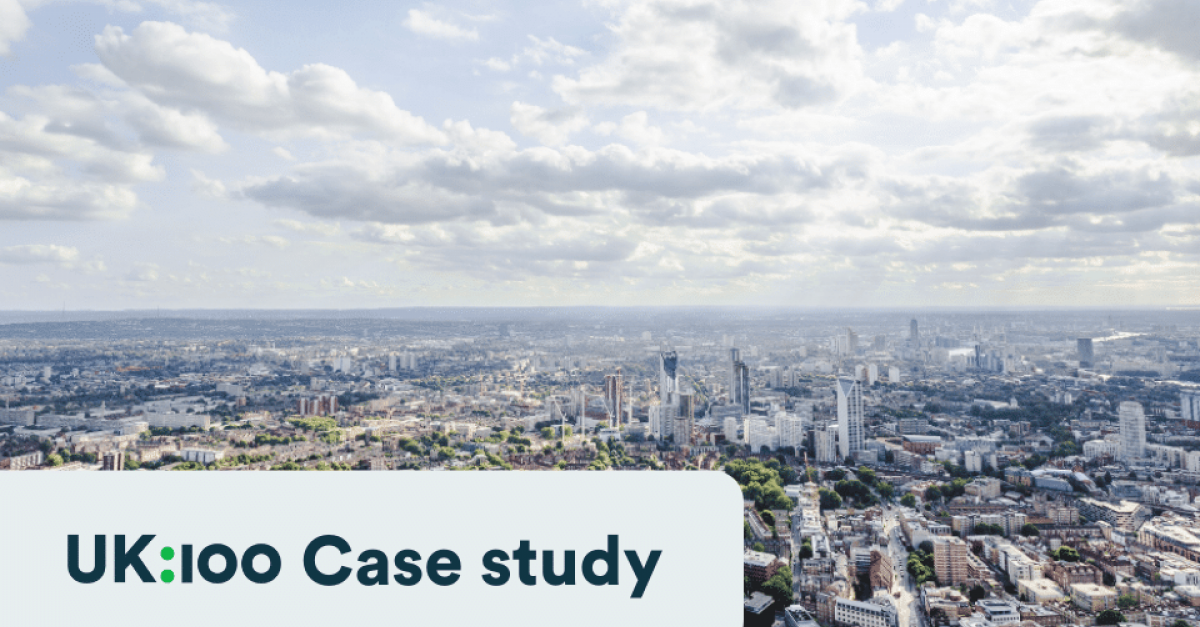Haringey’s Annual Carbon Report is the public-facing document reporting on the council’s and borough wide carbon reduction performance and projects. It uses national, regional, and our corporate carbon datasets to demonstrate our carbon reduction progress. This is framed alongside international, national, and regional policy changes and trends. It then highlights the projects being undertaken across the borough by the council and the community to deliver our ambition. This work has positively contributed towards the overall awareness, engagement with and progress on the Climate Change agenda in Haringey.
Since 2012, Haringey Council has produced a carbon report each year in partnership with the borough’s community.
The aim of the report is to:
-
Provide a transparent, year-on-year account of progress made to reduce carbon emissions from council operations and Haringey as a whole
-
Map Haringey’s progress alongside neighbouring boroughs, the London and national averages, framing the scale of the challenge
-
Demonstrate and promote the impact of projects at all levels of local government and across the community to inspire further action
-
Increase education on and awareness of the Climate Change agenda
Since 2017, this reporting process has also been included within the council’s constitution. This enables us to understand and take accountability for our carbon emissions. We report this annually to Full Council in the same way we report our financial budgets.
The Annual Carbon Report is now in its 11th year.
The Council's Carbon Management Officer leads on the development of the Annual Carbon Report and data collection. In total it takes approximately 0.1 FTE role over the course of a year to deliver (although mostly focused around a 6-month period). During this time, they undertake data collection and analysis, collection of case studies, final design and write up, internal reporting presentations and publication. Work starts in June when the latest UK local authority and regional carbon emission figures are released from BEIS. Around the same time, the council will have produced its own carbon reduction measurements.
Over the summer and autumn, we reach out to the community to collect case studies to showcase best practice and innovation. We also contact a range of services across the Council to send us their positive actions, promoting and encouraging more services to deliver further action, across all areas of the Council.
Headlines of the report are presented at internal board meetings to update service areas on carbon reduction targets and example projects. It often leads to a healthy conversation about carbon reduction, sharing of ideas, and friendly competition between services.
The final report is then published at a Full Council meeting. This is then further publicised with a special Haringey Climate Forum meeting / celebration event to update borough community groups on our performance and actions.
The report requires input from a range of stakeholders:
-
Community group members and representatives – such as Friends of the Earth, Sustainable Haringey, Extinction Rebellion, Friends of Parks, Haringey Cycling Campaign, Community Energy Groups, etc.
-
All service areas within the council that have a responsibility to reduce emissions in line with actions listed in the Climate Change Action Plan
-
Elected members
-
External contractors, such as our waste collection service
The Annual Carbon Reports are also available for viewing on the Haringey Climate Forum (HCF) website. This group has been a key interface between the council and community underlining how the task of reducing emissions is, and must be, a shared endeavour, promoting a joined-up approach and inspiring action. The group has been active since 2011 when the group was originally named 40:20, reflecting Haringey’s first ambitious target of reducing borough emissions by 40% by 2020.
Quentin Given, the convenor of the Haringey Climate Forum, said “Haringey is one of the few local authorities that produced an annual carbon report. This is a handy compendium of the different strands of climate action, both statutory and voluntary. It is also a key tool of transparency – we can see what the council is and isn’t doing and what impact it is having. It also helps expose the gap between what the council is currently able to deliver, and the action that the climate emergency demands of us, so it can also be a lobbying tool. We recommend other local authorities to follow Haringey’s example by producing this sort of annual statement.”
The 2022 Annual Carbon Report will report whether Haringey successfully met its original 40:20 target (40% reduction by 2020), as BEIS emissions data will be published for 2020 in summer 2022. The Council adopted this target on the back of a national campaign launched by Friends of the Earth to encourage Local Authorities to cut emissions.
In line with many Councils and reflecting growing public interest and concern around global carbon emissions, in March 2021 Haringey Council published a new borough target of reaching Net Zero Carbon by 2041 (bringing forward the original ask of 2050). The revised 2041 target was based on the deliverability of carbon reduction projects and programmes across the systems within the borough that have significant carbon impacts. It addresses emissions from Housing, Transport, Businesses, and the Council, while addressing the need to increase local renewable energy generation and community empowerment and co-delivery.
The projects and timelines for action are published in our Climate Change Action Plan. Progress will be measured by the Council using the London Energy and Greenhouse Gas Inventory, which is similar, but slightly more comprehensive than the BEIS carbon emissions data. It will also allow a more London-focused narrative and comparison between the London boroughs. Alongside the new borough target, the Council reports on the Council’s core operational buildings (not schools) and fleet becoming net zero carbon by 2027. These new targets require more focused effort with higher impacting projects that are delivered quicker. The 11th Annual Carbon Report will also detail progress on the new target, and then from 2023 onwards, the report will only report against the council’s 2027 and borough’s 2041 targets.
The impact lies in the legacy of having reported on our carbon reduction journey for eleven years. By engaging community representatives in the collection of information, they help to amplify and advance the benefits of the report in a positive multiplier effect.
The exact impact of who the report has reached has not been measured; it is difficult to track who has downloaded the report from the council and HCF websites. However, the reports download figures are comparable to other reports that the council produces.
Other boroughs have started reporting on progress against their climate change action plans. The template is able to be used by anyone and other authorities have adopted and developed Haringey’s approach to help their report and community engagement, such as Enfield and Gravesend. They have highlighted that this format is a simple and an easily accessible framework for reporting, builds in community actions and signposts others to the community action, and increases the area’s success in delivering carbon reduction.
The main co-benefit of producing the report is the positive reinforcement of what the borough has achieved and providing a platform to feature the council’s and the community’s projects. This has resulted in a sense of ownership in reducing emissions and inspired more community-based action.
Moreover, the Annual Carbon Report has consistently highlighted the wider co-benefits of reducing our emissions across the borough. Every year, the report features examples of projects that improve air quality, tackle fuel poverty and strengthen the green economy. Other aspects that are covered include the benefits of supporting active travel – such as School Streets, nature-based initiatives that improve the borough’s biodiversity and ecosystems – such as the council’s tree planting campaign, or community-led projects – such as the borough’s community energy company, En10ergy. This reinforces the message that carbon reduction brings wider co-benefits to the borough.
The report is often also a simple way of answering carbon-related Freedom of Information requests, and has been highlighted in studies around community carbon action.
For the latest Annual Carbon Report and the Council’s historic reports please see here – Annual Carbon Report | Haringey Council.
The main successes of the report have been the project case studies and annual reporting of Haringey’s carbon reduction journey. The community have been supportive in showcasing their hard work within the report and help contribute to it annually. On average there are 10-15 key community and council projects within each Annual Carbon Report. Case studies also include links to how people can get involved with projects and groups. These projects emphasise that the responsibility to reduce emissions is shared by all and has allowed the borough to build a legacy of positive change.
Additionally, the policy changes at international, national and regional level provide useful context to decisions and choices that are made at the local level along Haringey’s carbon reduction journey.
A key challenge that we face annually is encouraging the public to read the report. Since the adoption of the Climate Change Action Plan, we have an increased number of projects and actions that should be reported on, and thus it is crucial to present the information in a concise, accessible and informative way that inspires the people that read it. The risk is that the focus of the report shifts to a list of measurable metrics and statistics without telling the story of positive action. Therefore, an important learning and consideration for future reports as we continue to scale up action across the borough, is how to ensure the report does not become “too Council” or “too statistical based on performance alone.” Tailoring the narrative and framing is key to successfully disseminate the information in an accessible way, whilst inspiring wider community ownership and action.
Head of Carbon Management - joe.baker@haringey.gov.uk


